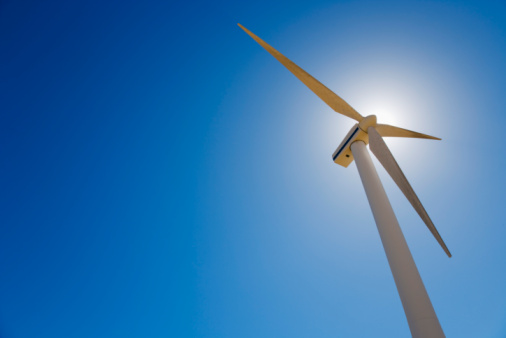The role that sustainable energy will play in the United States will get much larger, and developments in the sector during 2014 are setting the table for that new role.
That is the overall theme of a new report, Sustainable Energy in America, the 2015 Factbook on sustainable energy development produced by Bloomberg New Energy Finance and sponsored by the Business Council for Sustainable Energy.
The report especially noted four developments:
- New policies, the most important of which were the Obama administration’s new rules on power sector regulation and the bilateral climate agreement between the U.S. and China.
- Energy-intensive industries have “gravitated to the U.S.”
- Major new infrastructure projects have progressed to accommodate the influx of new businesses.
- Capital flows to financial vehicles like yieldcos and green bonds have paved the way “toward raising [the] huge sums of capital needed for the sustainable energy future to come to fruition.”
According to the report, the U.S. power sector is “de-carbonizing” as natural gas replaces coal, with production and consumption of natural gas at record levels in 2014.
ALSO READ: 5 Clean Energy Stocks That Are Potential Buyout Candidates
The U.S. economy is becoming more energy productive, using less energy to generate more growth. Measured on the basis of gross domestic product (GDP) per unit of energy consumed, U.S. energy-productivity has increased 54% since 1990, by 11% since 2007 and by 1.4% year-over-year from 2013 to 2014. The most telling example is the lack of growth in electricity demand, which grew at an annual rate of 6% from 1950 to 1990, falling to an annual growth rate of just 1.9% between 1990 and 2007. In the years since 2007, demand for electricity has posted no growth — none, zero.
Since 2007 a total of $386 billion has been invested in the U.S. clean energy sector. Bloomberg notes that the key drivers here were the brief window of renewed support for wind projects, the acceleration of the rooftop solar business and the emergence of publicly traded companies that own and operate renewable energy assets, aka yieldcos.
The report notes that gasoline consumption is down 8.6% since 2005, largely as result of federally mandated fuel-efficiency standards, increasing consumer demand for more fuel-efficient vehicles, fewer vehicles on the road and fewer miles driven and increased blending of biofuels.
From a sustainable energy viewpoint, not all the news was positive, however. Coal consumption for power generation, for example, rose from 37% of all U.S. electricity generation in 2012 to 39% in both 2013 and 2014. Natural gas prices rose in the past two years, making coal more cost competitive, but the report notes that the structural change of retiring coal plants “will probably lead to long-term increased market share for natural gas.”
ALSO READ: BP Energy Outlook Shows Renewables Rising, Coal Falling
The rise in coal consumption over the past two years has increased U.S. carbon emissions, but the silver lining is that tougher rules on power plants and rising fuel-economy standards on light vehicles are projected to push emissions down.
Another headwind is the slowing adoption — and in some cases rollbacks — among the states on energy efficiency legislation and standards has allowed emissions rates to tick higher.
The 2015 Factbook, like its two predecessors, contains approximately a zillion data points on the sustainable energy landscape in 144 PowerPoint slides. Happy hunting.
Is Your Money Earning the Best Possible Rate? (Sponsor)
Let’s face it: If your money is just sitting in a checking account, you’re losing value every single day. With most checking accounts offering little to no interest, the cash you worked so hard to save is gradually being eroded by inflation.
However, by moving that money into a high-yield savings account, you can put your cash to work, growing steadily with little to no effort on your part. In just a few clicks, you can set up a high-yield savings account and start earning interest immediately.
There are plenty of reputable banks and online platforms that offer competitive rates, and many of them come with zero fees and no minimum balance requirements. Click here to see if you’re earning the best possible rate on your money!
Thank you for reading! Have some feedback for us?
Contact the 24/7 Wall St. editorial team.



